Some Great Naturalistic Gardens in the UK
On a recent trip to the UK, I took the opportunity to visit some naturalistic gardens by heroes of mine. I thought you’d like to see them too – and see what I learned from them.
Beth Chatto’s Garden, Essex
Beth Chatto pioneered the phrase: right plant, right place. That was a few decades ago now, and that advice is table stakes to all of us who practice the kind of design I practice. Indeed, I go further and advocate for native plants: right plant, very right place.
Chatto started with her dry garden. Her part of England is the driest part of the country. She didn’t want to water her new garden (which was built on a parking lot) so she chose plants that thrive in dry conditions.

Chatto used gravel as a mulch in the dry garden. Plants don’t necessarily need moist and fertile soils. When you think about it, pretty much every landscape in the world – even deserts – has vegetation on it. Plants have evolved to cope with all sorts of conditions. That’s the wonder of nature.
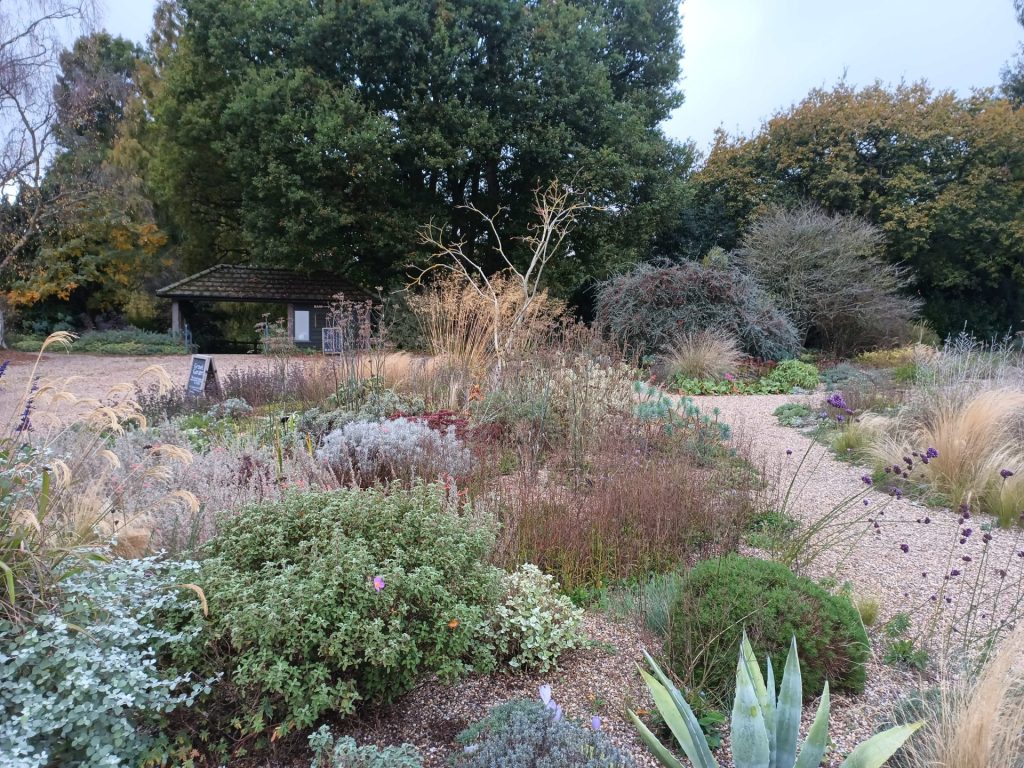
I like how the gravel paths merge into the planting. I do the same when I create mulch paths, like I did at Lucas House. Also notice the huge variety of plants here, particularly in form and texture (it was, after all, October, so there weren’t a ton of blooms.)

After the dry garden, Chatto went on to create landscapes for other conditions. I love in this picture the blue of the Asters (a typical fall plant) and the texture of the seedheads. You can feel the seasons in rotation here.
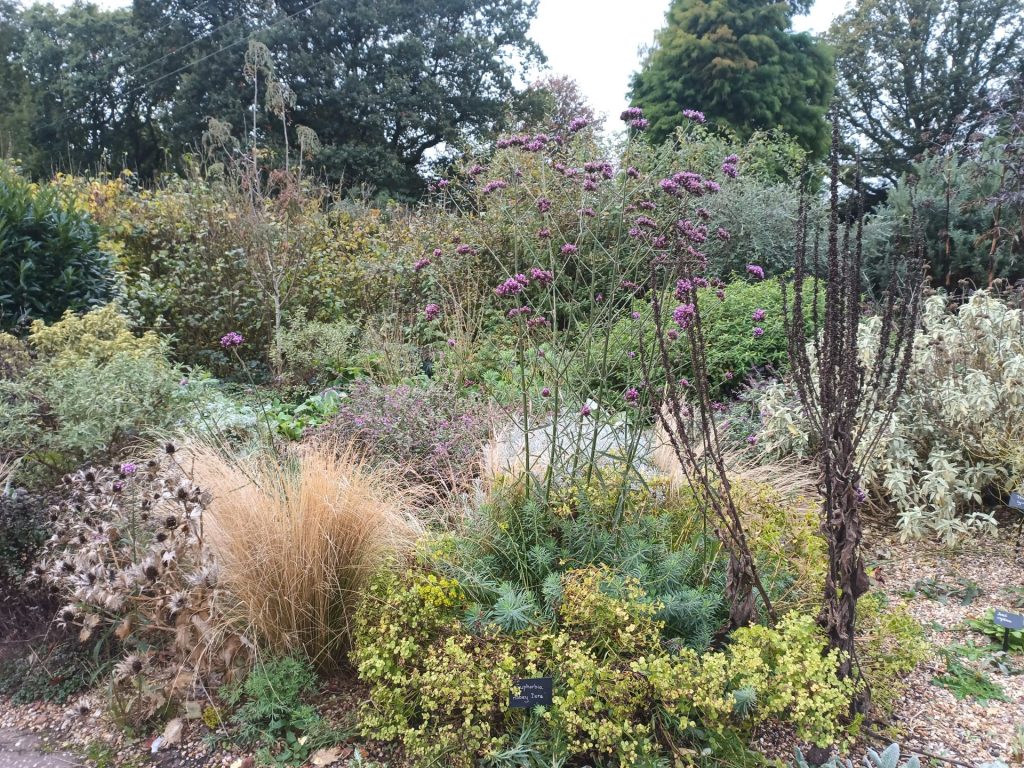
Chatto appears to use block planting rather than matrix planting. Block planting is, as it suggests, one group of plants and then another group of plants. Matrix planting has a consistent “background” of plants that tie the whole thing together, within which are blocks and drifts of other plants. I tend to use the matrix method – it’s more natural and also doesn’t put so much pressure on the performance of any individual plant species.
North American Gardens at the Queen Elizabeth Olympic Park, London
In advance of the 2012 Olympics, designers were asked to create landscapes using the native plants of various regions of the world. Sarah Price, Nigel Dunnett (who I have the privilege of studying under at the moment) and James Hitchmough created these gardens, which are still thriving today.
I gravitated towards the North American garden. It was strange to see so many familiar plants in London.
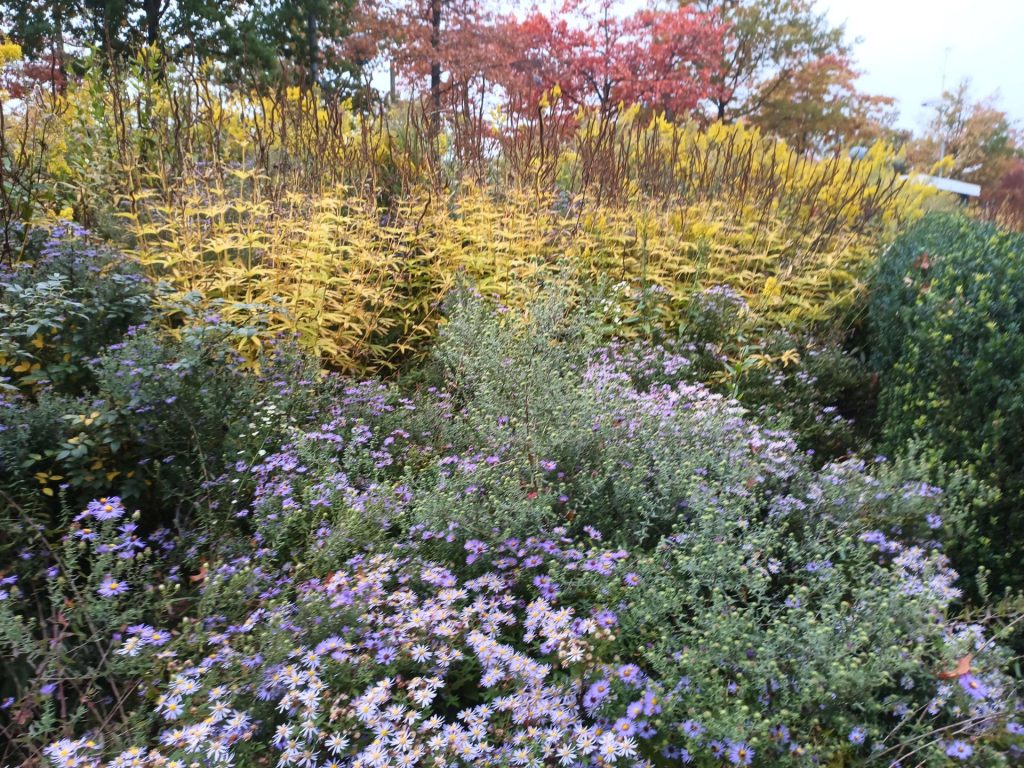
Just because it’s autumn doesn’t mean we can’t have flowers. Fall is when Asters and Goldenrods are in charge. And of course the background of colourful leaves in the structure layer.

Here’s an image where the Goldenrods take center stage. There are many varieties of Goldenrod, with slightly different growth habits or preferred conditions. The only one I avoid, ironically, is Canada Goldenrod – it’s a bit of a thug, which isn’t very Canadian, eh?
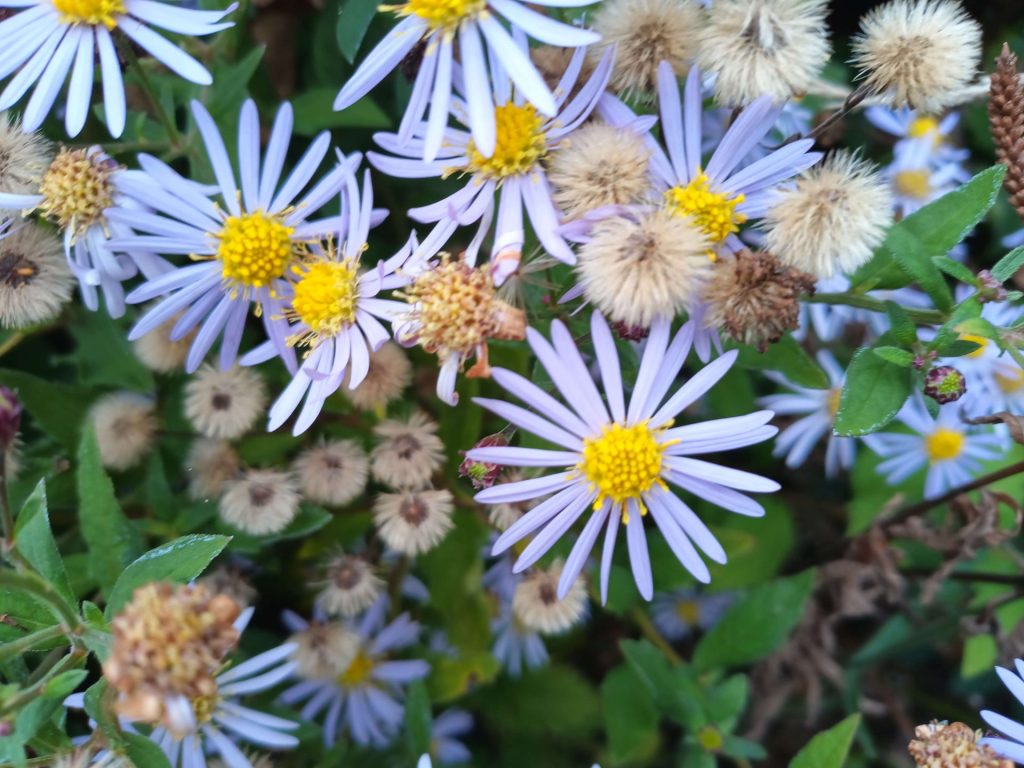
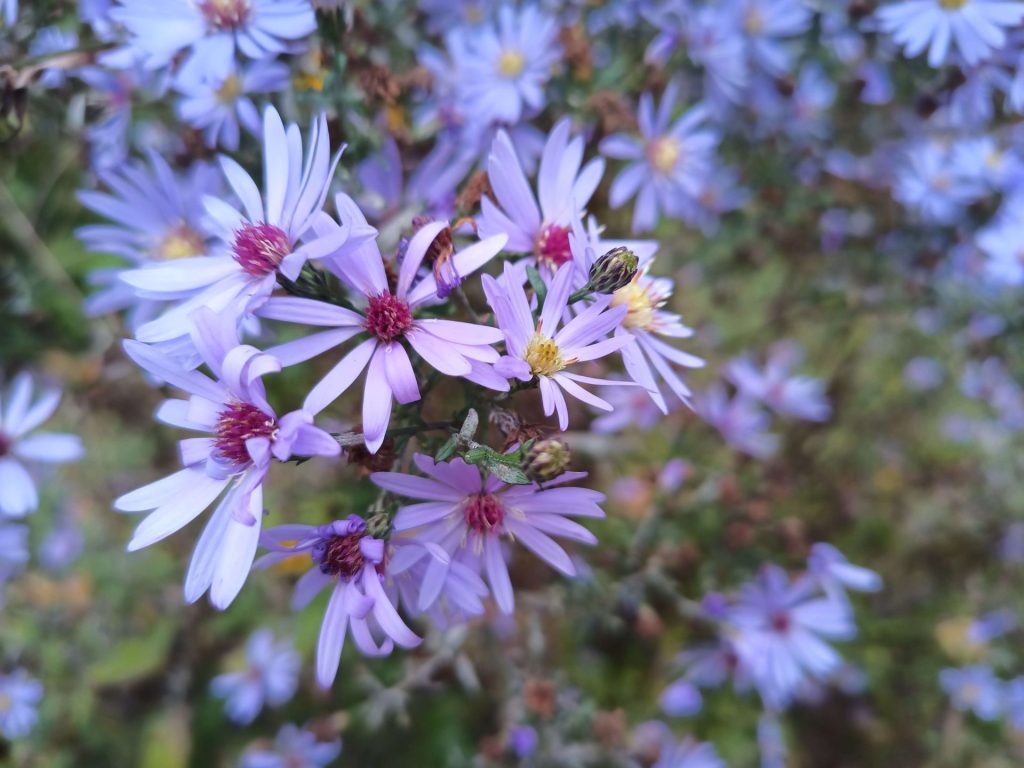
There are many Asters to choose from. I have four I use at the moment: New England Aster, Azure Aster, White-topped Aster and Heart-leaved Aster.
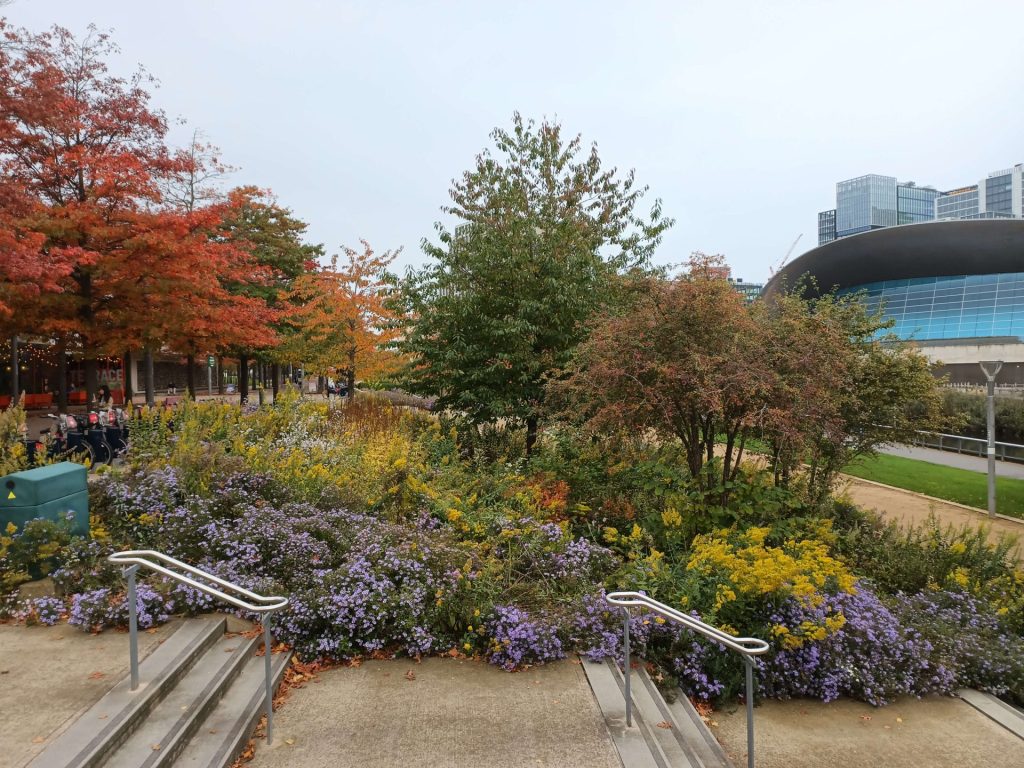
Here’s a wider shot of part of the landscape. Notice the use of the structure layer of trees and shrubs and the patterns of the Asters and Goldenrods.
Piet Oudolf-designed gardens at the Olympic Park, London
After the games were over, the site was changed up. One of the changes was the South Park Plaza, where famous perennial plant designer Piet Oudolf was brought on board.
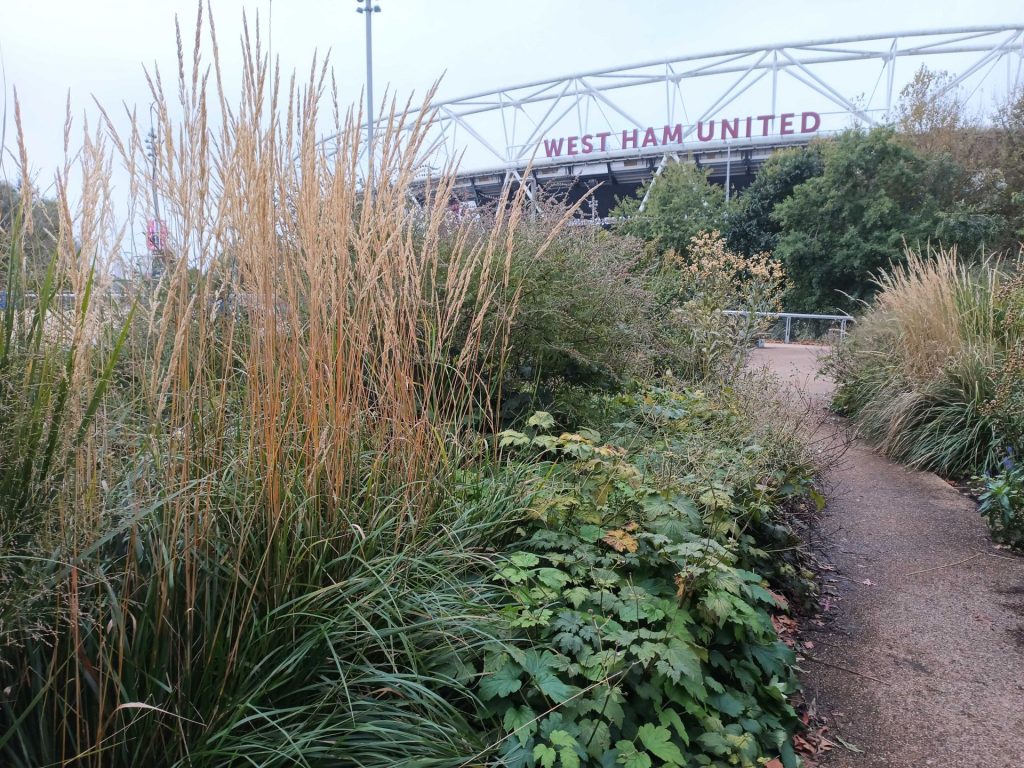
Piet Oudolf plants densely, which is what all naturalistic designers, including myself, do. Look at those tall grasses providing fall interest!
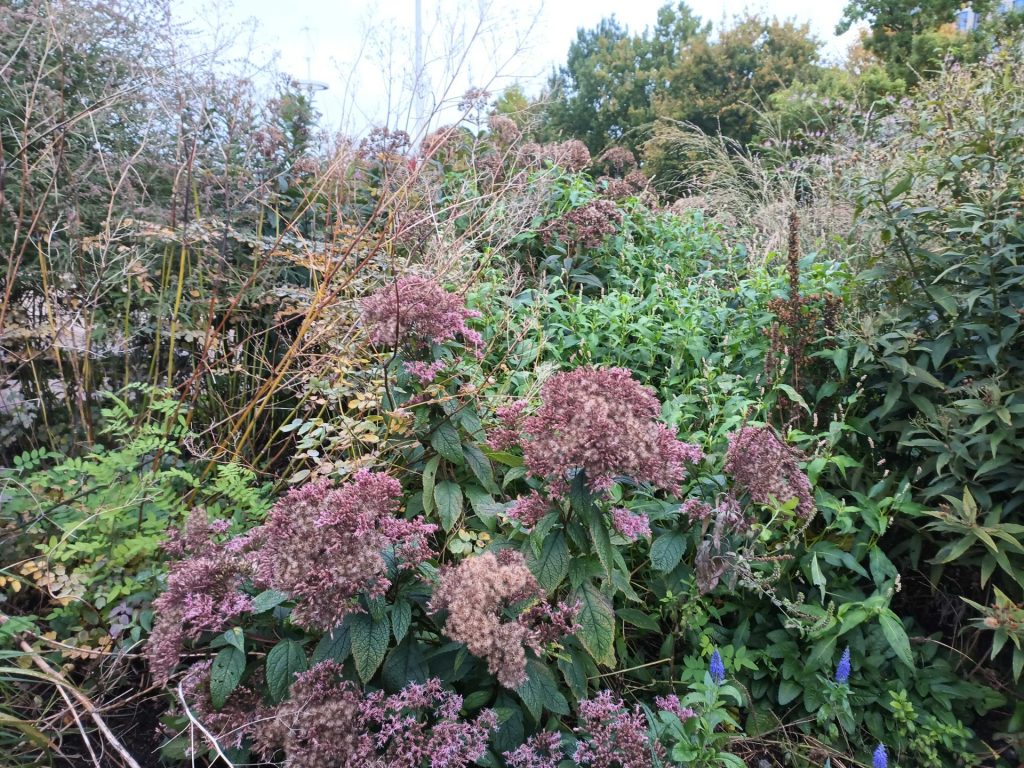
The plant in the foreground looks very much like Joe Pye Weed, which is found in Haliburton’s roadside ditches. I don’t know if it is or whether it’s a cultivated version of it. Oudolf is OK using non-native or cultivated plants.
The Barbican, London
I visited the gardens at the Barbican, designed by Nigel Dunnett, in the spring. So it was interesting to go back in the fall, when they look quite different.
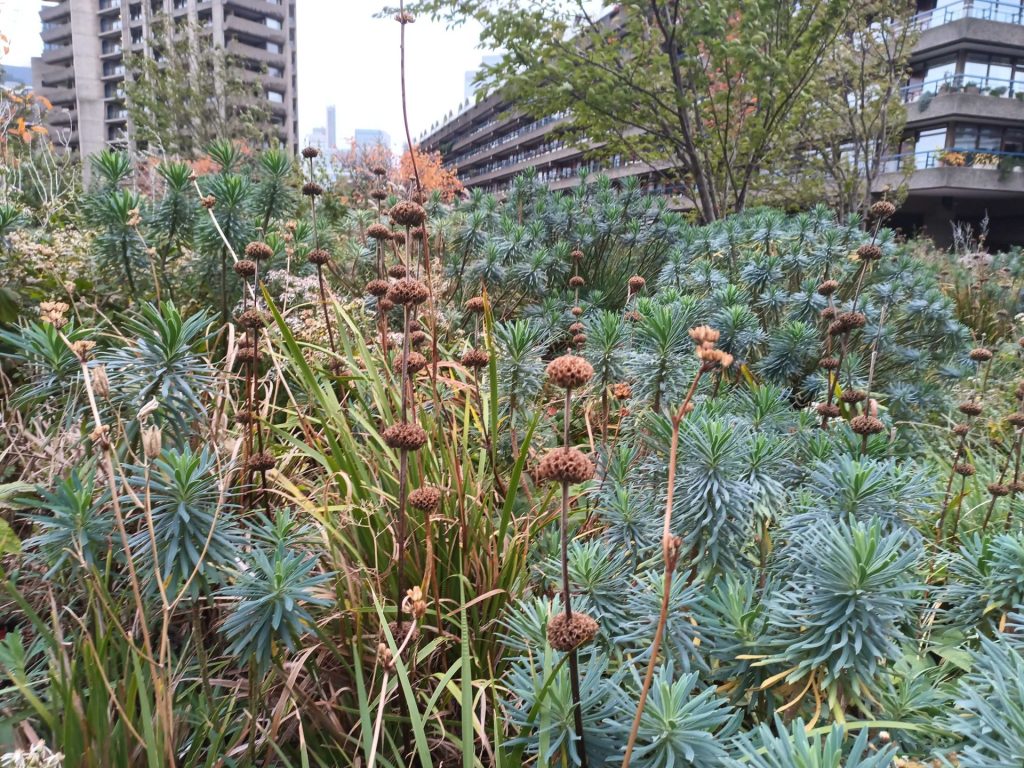
A fall garden often relies on texture – look at what is on offer here! Foliage and seedheads both bringing something to the party.

Species of Birch (Betula) always bring a great element to the structure layer, with their white trunks.
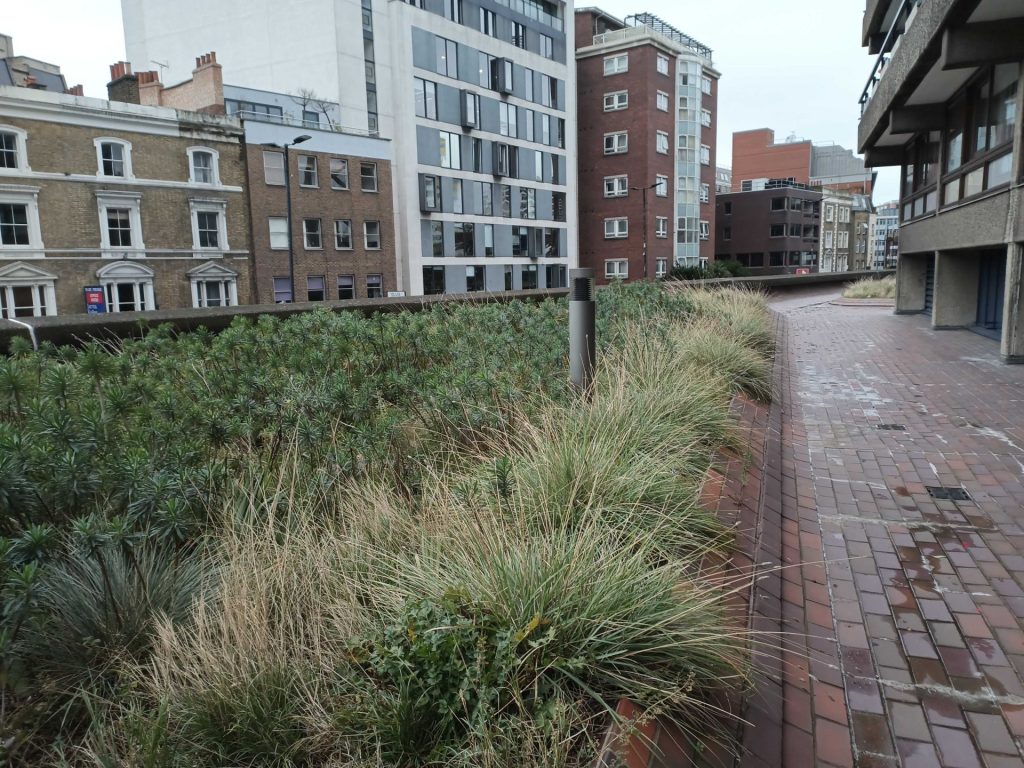
A formal arrangement here, with bunchgrasses lining the bed. As you can see, the garden is actually a roof garden.
